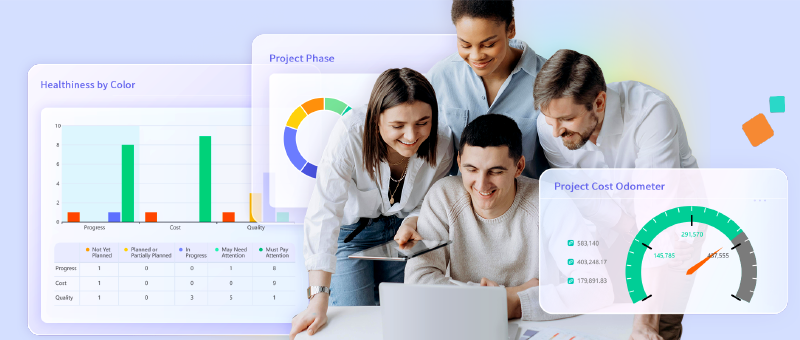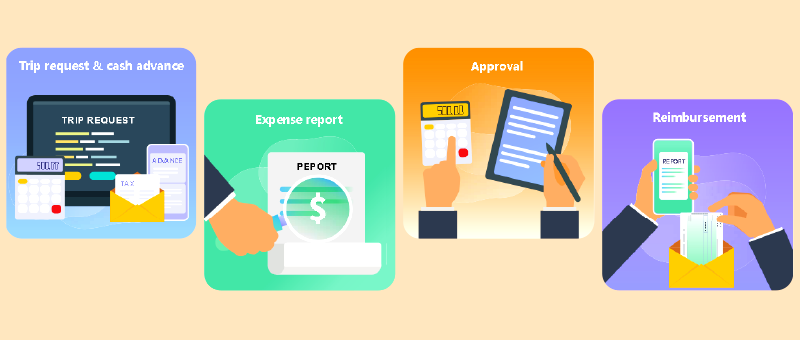Energy Project Mgt. Solution
Challenge
Driven by a combination of renewable energy, battery storage and digital networks, rapid technological innovation is changing the institutional landscape. Shifts in economic power, resource constraints, population growth, rapid urbanization, industrialization of emerging economies, levels of energy consumption, generation capacity, environmental challenges, resource scarcity and other trends are having a dramatic impact on the energy industry.

From initial development and planning to front-end design, project management and commissioning, the energy industry requires robust project management software to manage multidisciplinary engineering activities in all phases of a project.
Project management methods are necessary for energy conversion, mainly because project management methods force people to strictly define project objectives. The benefits of project management over traditional energy projects, such as the construction of power plants, are clear. The goal of building a power plant is to create machines that produce several kilowatt-hours of electricity reliably, efficiently and cleanly. The goal of reforming the power sector is more ambiguous.
Energy reforms may have objectives that are difficult to define, or they may have unintended consequences. If the goals of a plan or program are unclear, it requires a project management approach.
8Manage PM provides the following functions applicable to energy projects (including reform projects):
A project management approach aimed at developing a project charter begins with identifying what the problem is. This is not a trivial exercise. In the process of diagnosing problems in the energy industry, consider diagrams showing causal interconnections. Traditional problem diagnosis may involve root cause analysis, fishbone diagrams or problem trees. However, the issues in the energy sector are more complex and require a comprehensive and systematic approach.
A project charter is a useful document that helps set up a mission and sell ideas to stakeholders.
Project Management Professional (PMP) credential holders are well aware of matrix analysis for stakeholders, with quadrants used to indicate influence and importance. Matrix analysis tools are very useful and simple. Impact-materiality analysis can be used as an early-stage planning whisper tool. However, you should release this information to stakeholders with great care because no one wants to be seen as incompetent or unimportant.
Consider an alternative plan for stakeholder analysis that identifies only key stakeholders and gives circles where relationships can be discussed. This insider briefing applies to public forums and published reports, rather than demeaning stakeholders as unimportant persons or lacking influence. In the case of electric vehicle reform schemes using this description, we found that fuel suppliers had a lot of influence, but very low profile, which unexpectedly delayed the plan at a later stage.
Cost-benefit analysis attempts to distill the benefits and costs of a job into a single ratio. For example, a country may wish to reduce the consumption of fossil fuels by increasing the use of non-fuel renewable energy sources. The initial cost of installing wind or solar equipment is (promisingly) covered by long-term savings that come from reduced fuel use.
Another common example of cost-benefit analysis of energy sector reform is the creation of competitive energy markets.
When using project management in energy sector reform, the biggest issue is managing scope and schedule. Energy reform requires personal persuasion, public opinion and behavioral change. It is difficult to curate public comments, but it is useful to have a project management mindset.
For example, an energy sector reform plan might aim to improve energy efficiency by getting people to install insulation in their homes. Businesses and homeowners can often afford insulation, but tenants cannot. Homeowners have no incentive to add insulation because long-term benefits (remember cost-benefit analysis) are not accrued to them and tenants pay for utilities regardless of usage. Therefore, after stakeholder analysis, the scope of this reform needs to have an element that generates viable solutions for stakeholders when incentives are not properly in place.
If some stakeholders are affected by non-rewarding factors, even if a group of stakeholders is gaining benefits, the scope will be affected. In terms of energy efficiency, the government may subsidize the replacement of low-efficiency air conditioners from high-efficiency air conditioners. In this case, the utility that sells the electricity suffers a loss of revenue if customer efficiency increases. In this case, the scope needs to take into account stakeholder objections and even possible deliberate obstruction of an originally well-defined reform plan.
Schedules can be difficult to manage during the energy sector reform because many reforms rely on unpredictable legislation. Nonetheless, there is value in developing and managing schedules, as stakeholders need to be updated and made aware of the impact of major delays in schedules.
Even with clear project charters and well-managed stakeholders, developing a schedule for energy sector reform remains challenging. This is because energy is highly integrated with our business, personal lives, mass employment and government revenue. Perhaps more serious than typical project management applications, energy reform will present unpredictable stakeholders and issues that can overwhelm an originally carefully crafted schedule.
Energy sector reform is more flexible and less predictable than creating physical structures or generating one-off specific events. The use of project management techniques in energy sector reform may not seem appropriate, but it may be more necessary. Project management techniques help reformers define reform goals, understand and collaborate with stakeholders and accelerate legislation as well as manage the scope and schedule of reform programs to achieve results.

























































































































